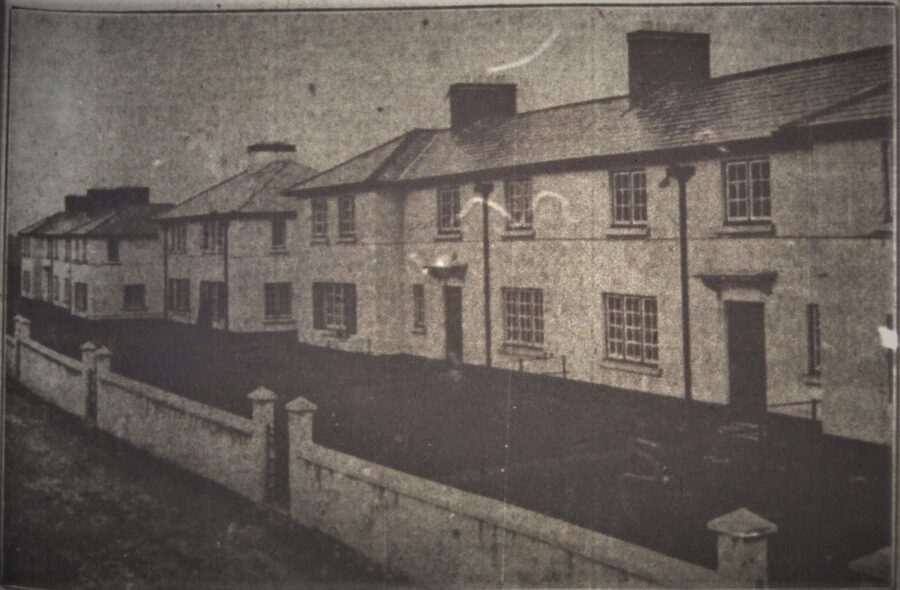
Kieran’s Our City, Our Town Article,
Cork Independent, 22 June 2023
Recasting Cork: The Ex-Service Men Houses
One hundred years ago, references are made in an editorial in the Cork Examiner on 20 June 1923 to the challenges associated with the construction of First World War ex-servicemen housing. Concern was noted in Cork that there was a delay in providing housing for ex-soldiers and sailors.
In many districts throughout County Cork and across Munster, schemes of a limited nature had been in progress. In many cases these houses were already occupied. However as far as Cork itself, with its large population of ex-service men, the editorial describes that the public had not “so far been aware of any steps being taken to provide a suitable scheme of houses for these men”.
The context to the latter concerns was connected to an eight-year old housing programme for ex-servicemen of the First World War. After the war providing cottages & agricultural small holdings were key aims of the British Government’s programme for reconstruction and national reform. Historian FHA Aalen writes in his history article entitled Homes for Irish Heroes, that initially under the Small Holdings Colonies Acts 1916 and 1918, the goal was to settle ex-servicemen on the land in experimental colonies of cooperative smallholders. The scheme was not successful due to a myriad of problems including high prices of buying good agricultural land and constructing housing. That being noted, over 16,800 applications though in England and Wales, out of a total of 56,000 were received.
In the Irish context, providing land with housing though was deemed political interference by Westminster in Irish land speculation. However, through the legal mechanism of the 1919 Irish Land (Provision for Sailors and Soldiers) Act, the Local Government Board could promote co-operation among those settled on the land and it was hoped to create newly established colonies of ex-service men all over Ireland with the guidance of the Department of Agriculture and Technical Instruction. Over 10,000 acres were allotted, which made up 360 holdings to ex-servicemen. Initial housing was located in rural areas but also nearby to cities and towns, where ex-servicemen could find work.
Many ex-servicemen’s cottages were constructed along roadsides, either singly or in smaller groups of perhaps four to ten houses. Their important compact estates and garden suburbs, some of them carefully planned, were also built on the outskirts of cities.
Many ex-servicemen’s cottages had a living room, a kitchenette and three bedrooms. Bathrooms were provided when a municipal water supply was available. The bulk of the cottages were two-storeyed with a total area of 600 to 700 square feet, some slightly exceeding 1000 square feet. Concrete block walls, then an innovative method of construction, were widely used in the construction of the cottages. In general, the had a front and back garden.
As a result of the foundation of the Irish Free State, the new measures were short-lived. That being said by the end of 1923, expenditure had exceeded £2 million and almost 2,000 houses had been built (1508 in the Free State and 408 in the north) and several hundred more were under construction. There was a limit of a cost of £400 for a labourer’s cottage of 500 square feet.
The Cork Examiner records that by June 1923 in Charleville 59 houses had been built and occupied, 26 in Mallow, 50 houses in Midleton rural district, including Ballycotton, 19 in Kinsale rural district including Crosshaven, 13 houses at Frankfield, six at Rochestown, four at Passage West, 46 in Clonmel, County Tipperary, and ten in Ardfinnan, County Limerick. Colonel Kirkwood had been busy in Cork inspecting what may be suitable sites for the scheme in the city. He had received valuable assistance from a Captain Penny and Councillor M J O’Callaghan, who is taking a very active interest in seeing the scheme brought to fruition. It was hoped to build a number of houses on three or four sites in the suburbs, which had been provisionally selected.
Post Irish Independence through a unique trust was set up by the governments of the Irish Free State, the United Kingdom, and Northern Ireland. The trust came into being legally on 1 January 1924. In the Irish Sailors’ and Soldiers’ Land Trust, first report, 1924-1926, it is noted that the Trust comprised of a non-political body comprising five members – three appointed by the British government, one by the Government of Northern Ireland, and one from the Irish Free State.
The Trust, once established, sustained the pace of building. By March 1926, 1692 cottages had been completed in the Free State and 733 in Northern Ireland, making a total of 2425. Amongst these over 200 houses were built in and near Cork city – Fairhill Villas and Kerryhill Road in St Mary’s Parish formed the largest development with 62 houses in blocks of either four or six units along straight avenues.
Considerable estates were also built at Friary Gardens (30 houses) and Friary Road (54 houses) in St Nicholas’ Parish, and at Whitehorn, Douglas Road (44 houses). Smaller developments included Bryan Terrace, Haig Gardens, Knockrea Gardens and Douglas Terrace, all in Ballinlough.
Caption:
1207a. Ex-Service Men Housing, unveiled June 1927, in Ballinlough, Cork (source: Cork City Library).